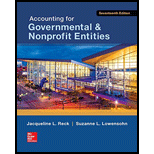
a-1.
Explain the concerns of a homeowner and the plausible actions of the homeowner, if the property had not yet been reassessed during the first two years of the pre-recession period, and hence, the property has been undervalued.
a-2.
Explain the concerns of a homeowner and the plausible actions of the homeowner, if the homeowner received a notice that the assessed valuation of the property has increased by more than 35% during the third year of the pre-recession period.
a-3.
Explain the concerns of a homeowner and the plausible actions of the homeowner, if the property of the homeowner has a market value less than the amount owed on mortgage, although the property value has increased during the year of and the year following the recession period.
b-1.
Explain the issues faced by the city manager of P City, while developing the budget and suggesting a property tax rate to the council, during the pre-recession period.
b-2.
Explain the issues faced by the city manager of P City while developing the budget and suggesting a property tax rate to the council, during the recession period.
Want to see the full answer?
Check out a sample textbook solution
Chapter 4 Solutions
Accounting for Governmental & Nonprofit Entities
- Agree or disagree with the post Financial statements provide raw data, but without analysis, they lack meaningful insight. Different tools help uncover trends, assess financial health, and compare performance effectively. Horizontal analysis tracks changes over time, identifying growth patterns or declines. Vertical analysis expresses financial items as percentages of a base figure, making comparisons across companies easier. Like liquidity, profitability, and solvency measures, ratios offer critical efficiency, risk, and stability assessments. These tools translate numbers into actionable intelligence, helping businesses, investors, and analysts spot risks, make informed decisions, and drive strategic planning. Without them, financial statements can be overwhelming and lack clarity. Agree or disagree with the postarrow_forwardWhat was the gain or loss on the disposal?arrow_forwardCompute the gain or loss on the transfer of equipment.arrow_forward
- What is the cost of unused capacity?arrow_forwardA $100,000 5-year 6% bond is issued on January 1, 2026. The bond pays interest annually. The market rate is 7%. What is the selling price of the bonds, rounded to the nearest dollar? Question 6 options: $104,213 $95,900 $100,000 $4,100arrow_forwardA $100,000 5-year 6% bond is issued on January 1, 2026. The bond pays interest annually. The market rate is 7%. What is the selling price of the bonds, rounded to the nearest dollar? Question 6 options: $104,213 $95,900 $100,000 $4,100arrow_forward
- Dell Industries has a normal capacity of 30,000 direct labor hours. The company's variable costs are $45,000, and its fixed costs are $27,000 when operating at normal capacity. What is its standard manufacturing overhead rate per unit?arrow_forwardWhich statement about a "treasury shares" is correct? Question 10 options: These shares continue to have voting rights. These shares must be cancelled upon re-purchase. The company does not pay dividends on these shares. These shares are disclosed as issued and outstanding.arrow_forwardWhich statement best describes the accounting when a company cancels its own shares at an amount higher than the average share value? Question 9 options: Contributed surplus and retained earnings will be debited. Contributed surplus will be debited, thereby decreasing equity. Contributed surplus and retained earnings will be credited. Contributed surplus will be credited, thereby increasing equity.arrow_forward
- Which statement is correct? Question 8 options: A corporation need only pay dividends when it declares them to be payable. A company can avoid a cumulative dividend on preferred shares if it declares dividends on common shares. Dividends are never discretionary payments. Companies must pay the shareholders interest to compensate for the time value of money lost on the deferral of dividend payments. No entryarrow_forwardWhich statement is correct about the derecognition of a matured obligation? Question 7 options: There will be a gain on retirement. There could be either a gain or loss on retirement. There will be no gain or loss on retirement. There will be a loss on retirement.arrow_forwardWhat is a bond indenture? Question 5 options: Guarantee of the price to the borrower. Promise from the borrower to restrict certain activities. Contract that outlines the terms of the borrowing agreement. Feature that permits the borrower to redeem before maturity.arrow_forward

 AccountingAccountingISBN:9781337272094Author:WARREN, Carl S., Reeve, James M., Duchac, Jonathan E.Publisher:Cengage Learning,
AccountingAccountingISBN:9781337272094Author:WARREN, Carl S., Reeve, James M., Duchac, Jonathan E.Publisher:Cengage Learning, Accounting Information SystemsAccountingISBN:9781337619202Author:Hall, James A.Publisher:Cengage Learning,
Accounting Information SystemsAccountingISBN:9781337619202Author:Hall, James A.Publisher:Cengage Learning, Horngren's Cost Accounting: A Managerial Emphasis...AccountingISBN:9780134475585Author:Srikant M. Datar, Madhav V. RajanPublisher:PEARSON
Horngren's Cost Accounting: A Managerial Emphasis...AccountingISBN:9780134475585Author:Srikant M. Datar, Madhav V. RajanPublisher:PEARSON Intermediate AccountingAccountingISBN:9781259722660Author:J. David Spiceland, Mark W. Nelson, Wayne M ThomasPublisher:McGraw-Hill Education
Intermediate AccountingAccountingISBN:9781259722660Author:J. David Spiceland, Mark W. Nelson, Wayne M ThomasPublisher:McGraw-Hill Education Financial and Managerial AccountingAccountingISBN:9781259726705Author:John J Wild, Ken W. Shaw, Barbara Chiappetta Fundamental Accounting PrinciplesPublisher:McGraw-Hill Education
Financial and Managerial AccountingAccountingISBN:9781259726705Author:John J Wild, Ken W. Shaw, Barbara Chiappetta Fundamental Accounting PrinciplesPublisher:McGraw-Hill Education





